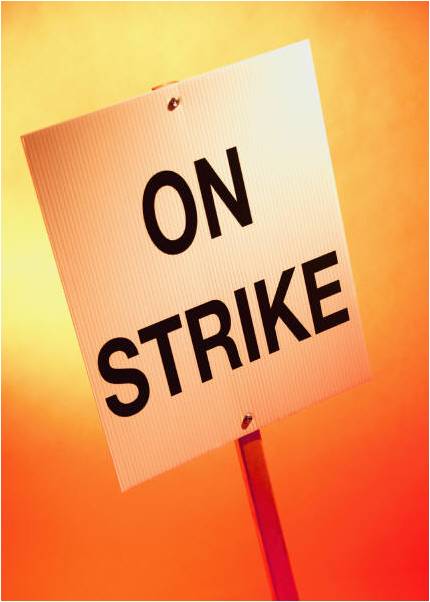We Have to Talk About the ILA Strike Threat
Time is ticking…

All the way back in November, the International Longshoremen’s Association (ILA) warned its members to prepare for a strike in October of this year. ILA’s contract, which covers dockworkers all along the East and Gulf Coasts, expires at the end of September. The ILA’s president, Harold Daggett, made it pretty clear that if the union’s contract demands aren’t reached by then, dockworkers will go on strike. “We will be in the streets,” Daggett said, obviously referring to picketing instead of working.
Tick, tick, tick, tick, tick, tick…
Such a strike would likely cost the U.S. economy billions of dollars per day. Six of our country’s ten busiest ports are covered by the ILA contract as well as three of the busiest five. A study from almost a decade ago found that a strike from the International Longshore & Warehouse Union (ILWU) on the West Coast, which has the remaining four of the top ten busiest ports and two of the top five would cost the the economy $2.5 billion per day. A decade’s worth of inflation, particularly over the last few years, means a strike now would likely be significantly more costly in terms of dollar value, no matter which side of the country it’s on.
Tick, tick, tick, tick, tick…
When the ILA made its strike threat, we had about a year for the ILA and United States Maritime Alliance (USMX), representing the East and Gulf Coast employers, to come together on contract issues. Now that time has been approximately cut in half, shippers have to start considering strategies to protect themselves and their businesses from an ILA strike shutting down East and Gulf Coast ports in the fall. Shippers who did similarly, diverting cargo from West Coast ports when ILWU contract negotiations threatened disruption, were proven prudent when ILWU labor action did indeed hurt port operations in 2022 and ’23. But that disruption would be very mild compared to a full-fledged ILA strike.
Tick, tick, tick, tick…
The ILA and USMX did start very early negotiations in February of last year. Unfortunately, those talks fell completely apart, reportedly due to wage increase demands.
However, that is not the only sticking point these negotiations have. The ILA is drawing hard lines on automation. The union sees automation as an existential threat while the ports see it as necessary in order to keep up with the ever-increasing amount of goods global trade demands be moved through their terminals. Lagging automation compared to its utilization at the other ports around the world, in large part due to union opposition, makes U.S. ports able to move fewer shipping containers per hour and played a factor in congestion and supply chain disruption in the post-COVID shipping boom/supply chain crisis.
Tick, tick, tick…
When negotiations do finally start up again, even if they once again sink, the ILA has said it does not want any mediation from the White House. “We will not be interested in Biden sending us a mediator if negotiations are not going well,” Daggett said back in November. And that’s with a man in the Oval Office who said he would be “the most pro-union president in history.” Maybe Daggett was just taking the advice Politico reported President Obama gave to not “underestimate Joe’s ability to fuck things up.” However, it sounds more like the union is not interested in bending on its demands and would rather strike than enter mediation.
Tick, tick, tick…
First, we simply need to see the parties back at the negotiating table. Has there been any movement in that direction? Yes, actually. Last month, Michael Angell reported in the Journal of Commerce that Daggett sent a letter to ILA’s local chapters, finally telling them to resume negotiations with their respective port employers. He’d discontinued all such negotiations back in March of last year until this notice. Angell reported that Daggett also gave a hard end date to these local negotiations:
Now the locals have until May 17 to complete those local negotiations, the letter said, adding the date “is a firm deadline and will not be extended.”
After that, there’ll be little more than four months for the ILA and USMX to work out a master contract before the strike of which Daggett warned would begin.
Tick, tick…
That means we’ll be paying careful attention to developments with the ILA at East and West Coast ports, giving updates on developments here in Universal Cargo’s blog, so you shippers can be more informed when planning and making decisions.





